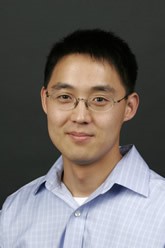The latest issue of Science features a new technology invented and developed by our very own assistant professor Dr. Thanh D. Nguyen. Prof. Nguyen’s brainchild, developed during his postdoc with Prof. Robert Langer at MIT, offers the latest advance in 3D manufacturing for microstructures of biomaterials: StampEd Assembly of polymer Layers, or SEAL for short. The reliance of current 3D printing techniques on potentially toxic impurities (e.g. UV-curing agents) for formulating printable inks poses clear problems for bio and medical applications. SEAL, on the other hand, can create nearly any 3D micro-objects of pure biopolymers (e.g. polymers used for surgical sutures) with complex geometries and at high resolution. Such enhanced biocompatibility of fabricated 3D microstructures for medical applications enables a broad scope of exciting new possibilities. For example, Prof. Nguyen along with other researchers at MIT used SEAL to create 3D core-shell micro-particles containing biological cargos (e.g. vaccines), which can be programed to sequentially release at different times or even at specific locations within the body. The compelling implications of this technique include the potential for a new set of single-injection vaccines/drugs, which could avoid the repetitive, painful, expensive, and inconvenient injections often required to administer vaccines and drug therapies like insulin or growth hormone. To view the article, click here.


 Dr. George Lykotrafitis and his student Kostyantyn Partola have been featured for their development of a device that tests blood viscosity – an important indicator of heart health. Kostyantyn has had support from the Accelerate UConn program as well as the Connecticut Center for Entrepreneurship and Innovation Fellowship program to support the commercialization of the technology. More information on their work can be found at UConn Today:
Dr. George Lykotrafitis and his student Kostyantyn Partola have been featured for their development of a device that tests blood viscosity – an important indicator of heart health. Kostyantyn has had support from the Accelerate UConn program as well as the Connecticut Center for Entrepreneurship and Innovation Fellowship program to support the commercialization of the technology. More information on their work can be found at UConn Today: